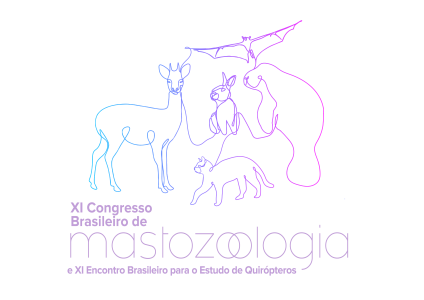Dados do Trabalho
Título:
GENETIC DISTANCE UNRAVELLING A LOW GENETIC DIFFERENTIATION WITHIN ALOUATTA SPECIES COMPLEXES (ATELIDAE, ALOUATTINAE)
Resumo:
Alouatta is one of the most speciose genera of Neotropical Primates and has a wide distribution, covering Mexico to northern Argentina, without consensus regarding the number of species. According to the phylogenetic relationships, the genus is composed of Mesoamerican and South-American clades, the latter encompassing the highest diversity. The South-American clade has groups of species that were and can still be considered subspecies: A.belzebul group (three taxa) and A.guariba group (two taxa), further A.caraya, A.seniculus, A.macconnelli, A.nigerrima, A.juara, A.puruensis, A.arctoidea, and A.sara. Aiming to detect the genetic diversity and delineate the number of putative species within South-American groups, we sequenced the mitochondrial Cytochrome b gene (MT-CYB) of 41 individuals, 20-A.guariba group (1-A.clamitans and 19-A.guariba), four A.belzebul group (2-A.belzebul, 1-A.discolor, 1-A.ululata), A.caraya (3), A.seniculus (2), A.sara (4), A.macconnelli (7) and A.nigerrima (1). Additionally, 58 sequences were obtained from GenBank, totalizing 99. The Mega X was used to edit the alignment and performed the genetic distance with the K2P model, the IQ-Tree to perform the Maximum Likelihood (ML) analysis, ModelFinder to find the best-fit model TPM2u+F+G4, and DnaSP and Network to performed median-joining (MJ) analyses. The species delimitation analyses were performed with mPTP and ABGD. The genetic distance within the species complex was low. The higher intraspecific genetic distance was 1.99% in A.sara (two lineages), 1.94% in A. caraya (two lineages), and 1.28% in A.guariba (two lineages). The higher interspecific variation within the groups were: 2.08% between A.discolor and A.belzebul, 0.38% between A.ululata and A.belzebul, 0.76% between A.macconnelli and A.nigerrima, and 1.94% between A.clamitans and A.guariba. ML and MJ showed similar results. The MJ showed at least 10 nucleotide substitutions separating A.sara lineages and nine between A.caraya lineages, whereas the species A.macconnelli and A.nigerrima were separated by four nucleotide substitutions. In the A. guariba group, seven mutations separated A.guariba from A.clamitans. In the A.belzebul group, 11 nucleotide substitutions separated A.discolor and A.belzebul, while A.ululata and A.belzebul did not differ. According to the mPTP and ABGD analyses, Alouatta has fewer species than it is considered today, with A.guariba and A.belzebul groups, and A.macconnelli+A.nigerrima representing only one species each. Genetic distance analyses with MT-CYB are used to delimit species, and it provides a quick assessment of putative species complexes, indicating a higher number of lineages associated with A.caraya, A.sara, and A.guariba. Although the MT-CYB is a good marker for phylogenetic studies, the analyses did not recover A.ululata and A.belzebul as distinct lineages and showed subtle differentiation between A.macconnelli and A.nigerrima. The species complexes are composed of lineages that recently diverged and have a few nucleotides substitutions between them, and the mPTP and ASAP showed a limitation for delimiting very close species. We highlight the necessity of evaluating with other molecular markers, the phylogenetic relationship, genetic diversity, and the status of the species within the species complexes.
Keywords: mtDNA, Neotropical primates, howler monkeys, species diversity
Financiamento:
Área
Genética
Autores
Cintia Povill, Maria Clara Santos Ribeiro, Paulo Sérgio D'Andrea, Cibele Rodrigues Bonvicino
